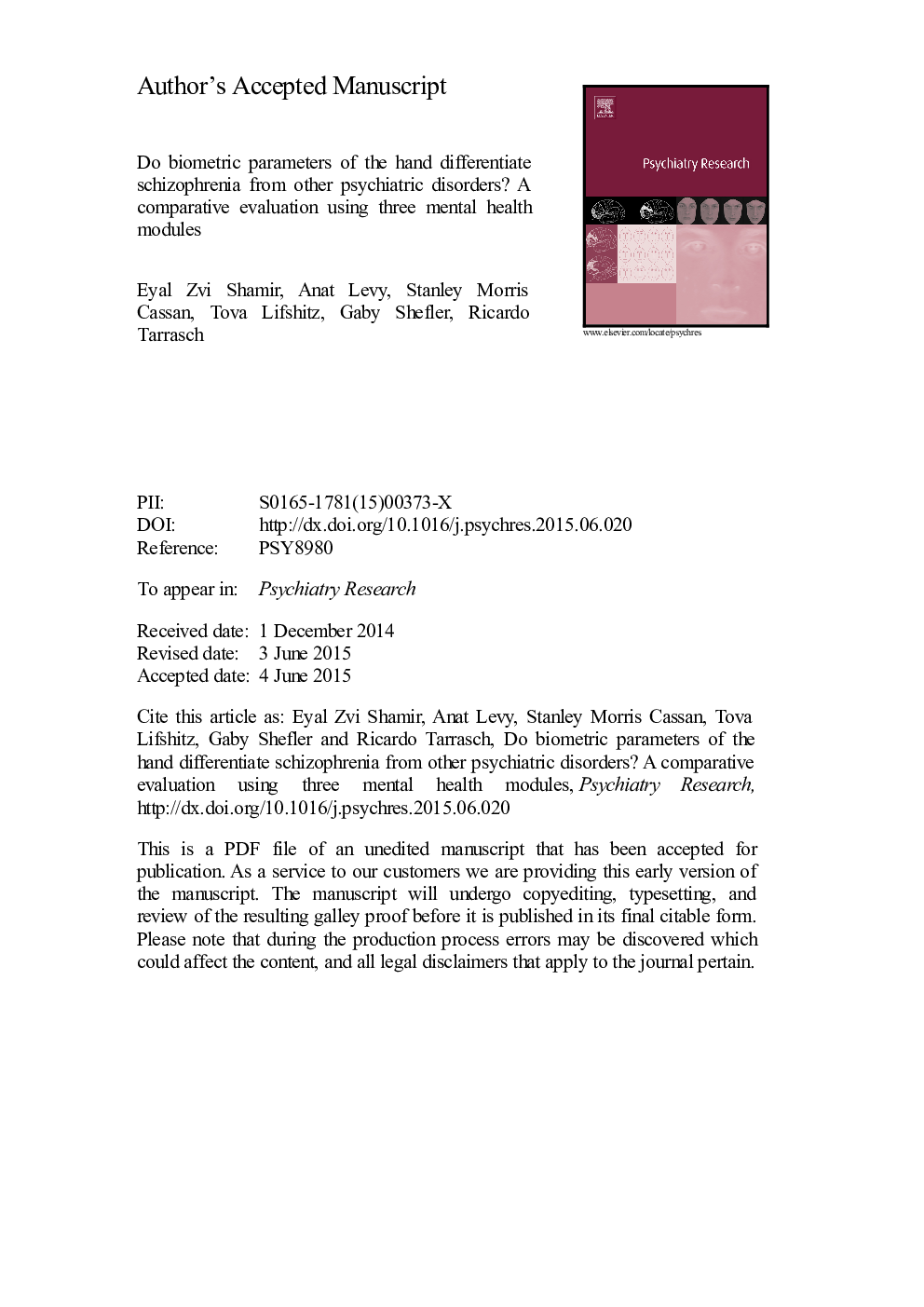| Article ID | Journal | Published Year | Pages | File Type |
|---|---|---|---|---|
| 10303690 | Psychiatry Research | 2015 | 20 Pages |
Abstract
The link between schizophrenia and anomalies in the distal upper limb is well documented. Preliminary studies have identified a number of biometric parameters of the hand by which schizophrenics can be distinguished from matched controls. The current study seeks to determine whether patients with schizophrenia can be singled out from a disparate group of other mental disorders by using the same parameters. We studied three groups, totaling 134 men: 51 diagnosed with schizophrenia, 29 with anxiety and mood disorders, and 54 comprising a control group. Seven parameters were studied: the proximal interphalangeal joint, the eponychia of the middle and ring digits, two dermatoglyphic features, and two constitutional factors. Examiners evaluated the parameters based on photographs and prints. An initial Mann Whitney comparison showed no significant difference between the control group and those identified with anxiety and mood disorders. We therefore accounted for them as a single group. In a discriminant analysis, an overall accuracy of 78.4% was established with a sensitivity of 80.4% (schizophrenics identified correctly) and a specificity of 77.1% (controls identified correctly). These results suggest that the biometric parameters employed may be useful in identifying patients with schizophrenia from a disparate group of other mental disorders.
Related Topics
Life Sciences
Neuroscience
Biological Psychiatry
Authors
Eyal Zvi Shamir, Anat Levy, Stanley Morris Cassan, Tova Lifshitz, Gaby Shefler, Ricardo Tarrasch,
